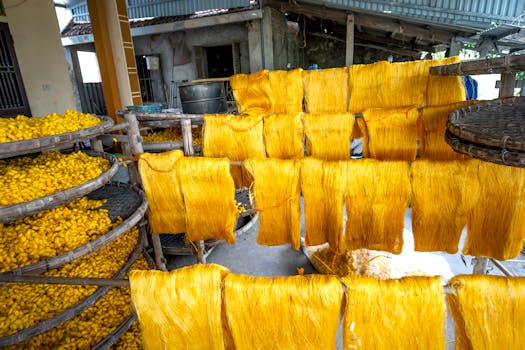Fiber Futures: Innovations and Trends in Africa’s Textile Industry

Fiber Futures: Innovations and Trends in Africa’s Textile Industry
Fiber Futures: Innovations and Trends in Africa’s Textile Industry is a growing sector that has the potential to drive economic growth and development in the continent. The African textile industry is experiencing a resurgence, driven by innovations and trends in fiber production, manufacturing, and sustainability.
Introduction to Africa’s Textile Industry
The African textile industry has a long history, dating back to the colonial era. However, the industry declined significantly in the post-colonial period due to a combination of factors, including lack of investment, outdated technology, and competition from cheap imports. In recent years, however, the industry has started to experience a revival, driven by government initiatives, foreign investment, and a growing demand for African-made textiles.
The industry is diverse, with different countries specializing in different areas. For example, Egypt is known for its high-quality cotton production, while South Africa is a major producer of wool and synthetic fibers. Other countries, such as Nigeria and Ghana, are also making significant contributions to the industry.
Innovations in Fiber Production
One of the key drivers of the African textile industry’s resurgence is innovations in fiber production. There are several new technologies and techniques being used to improve the quality and quantity of fiber production in Africa. For example, genetically modified cotton is being used in some countries to increase yields and reduce pests and diseases. Additionally, there is a growing interest in alternative fibers, such as bamboo and hemp, which are more sustainable and environmentally friendly.
Another area of innovation is in the production of recycled fibers. With the growing awareness of the environmental impact of the textile industry, there is a increasing demand for sustainable and eco-friendly textiles. Several companies in Africa are now producing recycled fibers, which are made from post-consumer waste, such as plastic bottles and old clothes.
Trends in Textile Manufacturing
There are also several trends in textile manufacturing that are driving the growth of the African textile industry. One of the key trends is the increasing use of digital printing technologies. Digital printing allows for faster and more flexible production, which is ideal for small and medium-sized enterprises (SMEs) that are common in the African textile industry.
Another trend is the growing interest in sustainable and eco-friendly manufacturing practices. With the increasing awareness of the environmental impact of the textile industry, many companies in Africa are now adopting sustainable practices, such as using renewable energy, reducing waste, and implementing recycling programs.
Sustainability and the Future of the African Textile Industry
Sustainability is a critical issue for the future of the African textile industry. The industry has a significant environmental impact, from the production of fibers to the manufacturing of textiles. However, there are several initiatives and innovations that are being implemented to reduce the industry’s environmental footprint.
One of the key areas of focus is on reducing waste and implementing recycling programs. Several companies in Africa are now implementing recycling programs, which involve collecting and processing post-consumer waste, such as old clothes and textiles. Additionally, there is a growing interest in upcycling and repurposing textiles, which involves transforming old or discarded textiles into new products.
In conclusion, the African textile industry is experiencing a resurgence, driven by innovations and trends in fiber production, manufacturing, and sustainability. While there are several challenges that need to be addressed, the industry has the potential to drive economic growth and development in the continent. With the right policies and initiatives, the African textile industry can become a major player in the global textile market.